Lapwing
Vanellus vanellus (Linnaeus, 1758)
L.
 LAPWI
LAPWI  4930
4930

Family: Charadriiformes > Charadriidae
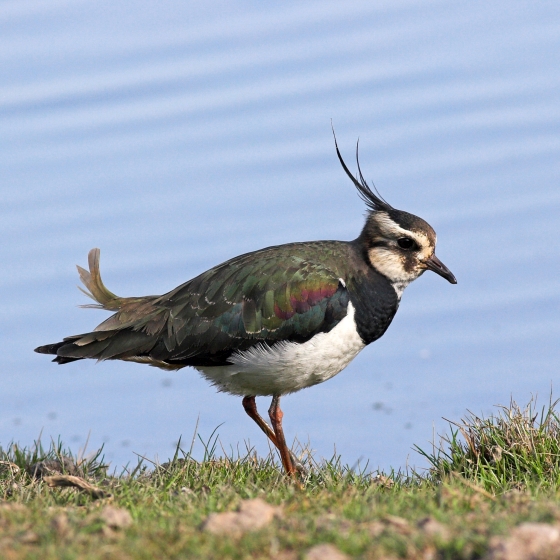
The noisy, tumbling display flights of this green and white plover are a welcome, if increasingly uncommon, sign of spring.
The Lapwing is a handsome wader with its glossy dark green plumage (often looking black from a distance) and long crest. It used to breed commonly over much of lowland Britain, but atlas projects have charted a reduction in the number of breeding locations, caused by changes in land management and increased predation pressure.
In winter, the Lapwing is widely distributed in lowland Britain, but BTO Surveys have shown that numbers have both shifted eastward (perhaps a response to milder winters) and increased in coastal wetlands as birds appear to feed more on mudflats at low tide.
Exploring the trends for Lapwing
Our Trends Explorer will also give you the latest insight into how the UK's Lapwing population is changing.
trends explorerIdentification
Lapwing identification is usually straightforward.
SONGS AND CALLS
Listen to example recordings of the main vocalisations of Lapwing, provided by xeno-canto contributors.
Alarm call
Song
Develop your bird ID skills with our training courses
Our interactive online courses are a great way to develop your bird identification skills, whether you're new to the hobby or a competent birder looking to hone your abilities.
Browse training coursesStatus and Trends
Population size and trends and patterns of distribution based on BTO surveys and atlases with data collected by BTO volunteers.
CONSERVATION STATUS
This species can be found on the following statutory and conservation listings and schedules.
POPULATION CHANGE
Although CBC recorded some increase in its early years, Lapwings have declined continuously on lowland farmland since the mid 1980s. National surveys in England and Wales showed a 49% population decline between 1987 and 1998 (Wilson et al. 2001). In Northern Ireland, the breeding population had shrunk to just 860 (277-1545) pairs by 2013, representing a decrease of around 89% since 1987, with the distribution becoming increasingly fragmented (Colhoun et al. 2015). Population declines there mirror similar declines throughout wet meadow areas of Wales and southeast England (Wilson et al. 2001, 2005a). The BBS map of change in relative density between 1994-96 and 2007-09 indicates that decreases have been strongest in lowland regions and the south and that some increase may have occurred in some upland and northern regions of Britain. Stability in breeding numbers in the Uists between 1983 and 2014 runs against the UK trend and heightens the relative importance of this population (Calladine et al. 2015). Winter numbers counted by WeBS, mainly at coastal sites and omitting some big concentrations inland, increased in Britain during the 1980s and early 1990s, but decreased steeply between 2005 and 2010 (Frost et al. 2020); these birds are mainly of continental origin. Lapwing is in decline across Europe, having decreased in all regions since 1980, although with differing regional timing (PECBMS: PECBMS 2009, PECBMS 2020a>). The 2009 review moved this species from amber to the UK red list, for which it continues to qualify on the strength of its UK decline.
| UK breeding population |
-59% decrease (1967–2020) 
|
| UK winter population |
-47% decrease (1995/96 to 2020/21)  |
Exploring the trends for Lapwing
Our Trends Explorer will also give you the latest insight into how the UK's Lapwing population is changing.
trends explorerDISTRIBUTION
In Britain, wintering concentrations of Lapwings are highest in the Somerset Levels, Fens, northwest England, the Uists, Caithness and Orkney. The former core area in central England is less dominant and Fenland and the east coast now more prominent than in the 1981–84 Winter Atlas. Densities of breeding Lapwings are highest in northwest England, Orkney, Shetland and the Outer Hebrides; those in Ireland are low throughout.
Occupied 10-km squares in UK
| No. occupied in breeding season | 2219 |
| % occupied in breeding season | 73 |
| No. occupied in winter | 2426 |
| % occupied in winter | 80 |
European Distribution Map
European Breeding Bird Atlas 2
Breeding Season Habitats
| Most frequent in |
Estuaries 
|
| Also common in | Marsh, Reedbed, Lakes, Ponds |
Relative frequency by habitat
Relative occurrence in different habitat types during the breeding season.

DISTRIBUTION CHANGE
Despite decades of population decline, Lapwings are still the most widespread breeding waders in Britain & Ireland. Over the last 40 years, they have been lost as breeders from most of southwest England, west Wales and western mainland Scotland. Losses throughout Ireland mean that the current range is less than half that in the 1968–72 Breeding Atlas.
Change in occupied 10-km squares in the UK
| % change in range in breeding season (1968–72 to 2008–11) | -18.6% |
| % change in range in winter (1981–84 to 2007–11) | --0.1% |
SEASONALITY
Lapwings are widely reported and present year-round.

Movement
Information about movement and migration based on online bird portals (e.g. BirdTrack), Ringing schemes and tracking studies.
An overview of year-round movements for the whole of Europe can be seen on the EuroBirdPortal viewer.
RINGING RECOVERIES
View a summary of recoveries in the Online Ringing Report.
Foreign locations of birds ringed or recovered in Britain & Ireland

Biology
Lifecycle and body size information about Lapwing, including statistics on nesting, eggs and lifespan based on BTO ringing and nest recording data.
PRODUCTIVITY & NESTING
First Clutches Laid 
|
12 Apr (25 Mar–25 May) 
|
Number of Broods 
|
1 |
Egg Size 
|
46×33 mm Weight = 26 g (of which 6% is shell) |
Clutch Size 
|
4 eggs | 3.76 ± 0.54 (2–5) N=4425 
|
Exploring the trends for Lapwing
Our Trends Explorer will also give you the latest insight into how the UK's Lapwing population is changing.
trends explorerSURVIVAL & LONGEVITY
View number ringed each year in the Online Ringing Report
Maximum Age from Ringing 
|
21 years 1 months 15 days (set in 1987) 
|
Typical Lifespan 
|
5 years with breeding typically at 2 year |
Adult Survival 
|
0.705±0.031  
|
Juvenile Survival 
|
0.595 (in first year) 
|
Exploring the trends for Lapwing
Our Trends Explorer will also give you the latest insight into how the UK's Lapwing population is changing.
trends explorerBIOMETRICS
Wing Length 
|
Adults | 231.3±6.3 | Range 221–241mm, N=748 |
| Juveniles | 227.1±9.2 | Range 217-238mm, N=385 | |
| Males | 233.7±5.9 | Range 224–243mm, N=304 | |
| Females | 228.3±5.4 | Range 220–236mm, N=205 |
Body Weight 
|
Adults | 250±25.23 | Range 214–295g, N=733 |
| Juveniles | 224±25.5043 | Range 189–276g, N=376 | |
| Males | 252±25.05 | Range 217–300g, N=296 | |
| Females | 248±28.28 | Range 211–300g, N=203 |
Feather measurements and photos on featherbase 
CODES & CLASSIFICATION
Ring size 
|
D |
Field Codes 
|
2-letter: L. | 5-letter code: LAPWI | Euring: 4930 |
For information in another language (where available) click on a linked name
Research
Interpretation and scientific publications about Lapwing from BTO scientists.
CAUSES AND SOLUTIONS
Causes of change
There is good evidence that declines have resulted from habitat loss and degradation due to changes in agricultural practice, in particular change from spring to autumn sowing, drainage of grasslands and loss of mixed farmland, which have led to breeding productivity dropping below a sustainable level. Chick mortality is thought to be the main determinant of poor Lapwing productivity, and therefore of population decline.
Further information on causes of change
The decline of the Lapwing exemplifies how different factors can combine to cause population change (Robinson et al. 2014). The decrease in the 1980s was due to a period of low survival, when annual life expectancy decreased from 7 years to just 4.5 years, caused by a series of cold winters. At the same time, though, average nest survival decreased markedly, meaning the population could not recover from what would normally have been only a temporary setback.
There is a good deal of research supporting the hypothesis that habitat loss and degradation due to the intensification of farming have reduced breeding productivity (e.g. Galbraith 1988, Shrubb 1990, Hotker 1991, Hudson et al. 1994, Siriwardena et al. 2000a, Taylor & Grant 2004, Wilson et al. 2005, Milsom 2005, Fuller & Ausden 2008). These changes include extensive drainage, increased use of pesticides and fertilisers, re-seeding, earlier and more frequent mowing, increased grazing pressure and loss of spring cereals. Increases in intensity of grazing have reduced the habitat quality for Lapwing (Shrubb 1990, Fuller & Ausden 2008), whilst fertilisation has led to earlier spring grass growth, earlier cutting dates and higher stocking levels, which have increased egg and chick mortality and reduced relaying opportunities (Durant et al. 2008). Drainage and loss of wet features on grassland have also had a negative impact, reducing food supplies (Taylor & Grant 2004, Eglington et al. 2010).
Loss of mixed farming systems and extensive grazing have reduced the availability of high-quality foraging habitat close to nesting habitat, i.e. unimproved pasture and meadows, to birds breeding in arable areas, resulting in reduced breeding success (Galbraith 1988, Hudson et al. 1994, Henderson et al. 2004).
In the uplands, afforestation has also resulted in habitat loss (Fuller & Ausden 2008). It is possible that afforestation may also cause indirect as well as direct habitat loss: a study in Estonia found that breeding sites were preferentially located further away from woodland and suggested that woodland planting may have contributed to declines there (Kaasiku et al. 2019); however, similar analysis has not been carried out in the UK. On arable land, spring-sown cereals were once favoured nesting crops but these have been widely replaced by autumn-sown cereals, which are less suitable breeding habitats (Shrubb 1990, Shrubb et al. 1991, Mason & Macdonald 1999, Fuller & Ausden 2008). Land use changes causing a reduction in spring sward height also probably contributed to a decline on mixed farmland habitat in Scotland (Bell & Calladine 2017).
Lapwing population declines may also be explained partly by increased nest predation rates resulting from habitat changes due to agricultural intensification (Baines 1990, Liker & Szekely 1997, Jackson & Green 2000, Chamberlain & Crick 2003, Evans 2004, Jackson et al. 2004, Milsom 2005, Bolton et al. 2007, Teunissen et al. 2008, MacDonald & Bolton 2008b, Bellebaum & Bock 2009,
Mason et al. 2018). Long-term nest record card analysis has shown that the proportion of nests lost to predators was substantially higher in the 1990s than in previous decades (Sharpe et al. 2008).
Recent empirical evidence suggests that levels of predation on wader nests are unsustainably high in many cases, even in some situations where breeding habitat is otherwise favourable (MacDonald & Bolton 2008a). Laidlaw et al. (2015, 2017) found that nest predation rates in wet grassland increased as the distance from patches of taller vegetation increased, and suggested that the distribution and activity of predators might be affected by the vegetation. Small mammal activity was higher in tall vegetation, particularly later in the breeding season, hence foxes in the vicinity of vegetation patches may be attracted to them and away from Lapwing nests and chicks (Laidlaw et al. 2018). In dry fields, nest predation rates were higher further from field edges (Laidlaw et al. 2017). Predation rates are also higher in areas with low Lapwing density (Laidlaw et al. 2017).
In the Uists, where the overall population is stable (Calladine et al. 2015), clutch survival is significantly lower in areas where introduced Hedgehogs Erinaceus europaeus are more abundant; however the impact of predation on local populations was unclear and more complex factors may influence trends (Calladine et al. 2017).
A Danish study found a negative correlation between annual predation rates and the numbers of breeding Lapwing, suggesting that birds nesting at higher densities may be more efficient at defending against predators (Moller et al. 2018) and hence that declines could make populations even more vulnerable if they also lead to lower nesting densities. McCallum et al. (2015, 2016) found that Lapwing density was greatest at higher elevation, but only where soils were less peaty and less acidic, opening the way to trials of whether soil amendments such as liming could contribute to conservation management for breeding Lapwings and other species of concern that depend upon soil-dwelling invertebrates. Declines among Lapwings are unlikely to be ameliorated by either habitat improvement or predator control in isolation, however (Bodey et al. 2011, Smart et al. 2013).
Information about conservation actions
As a result of the declines, the Lapwing has been the subject of a substantial amount of recent research and a number of conservation actions have been suggested. Local management actions to improve breeding habitat could include the creation of Lapwing plots in arable fields (Schmidt et al. 2017); sowing spring cereals rather than autumn cereals; delaying mowing or grazing; management of water levels to restore wetland features and habitats (Eglington et al. 2010); the exclusion of livestock from selected areas on coastal grazing marshes where the rate of grass growth is slow in spring (Hart et al. 2002); and soil amendment on upland farmland (McCallum et al. 2015).
The exclusion of predators such as foxes may also be important (see Causes of Change section), and can improve nest success (Sheldon et al. 2007; Rickenbach et al. 2011; Malpas et al. 2013b), although one study found that predator control did not affect nesting success (Bodey et al. 2011). An alternative, and possibly more sustainable, approach could be to influence predation rates by the creation and management of habitat to influence the movements of predators away from nests; for example taller vegetation patches which attract predators as a result of higher vole numbers, and wetland features to deter some predators (Laidlaw et al. 2015; 2017; 2018).
However, declines among Lapwings are unlikely to be ameliorated by either habitat improvement or predator control in isolation (Bodey et al. 2011, Smart et al. 2013 Smart et al. 2013) and hence an approach which combines different conservation actions across sites and across wider landscapes may be required. An Estonian study found that apparently suitable sites close to woodland were avoided (Kaasiku et al. 2019); hence habitat improvement should be focused on areas away from woodland and new woodlands should not be planted close to existing sites.
PUBLICATIONS (7)
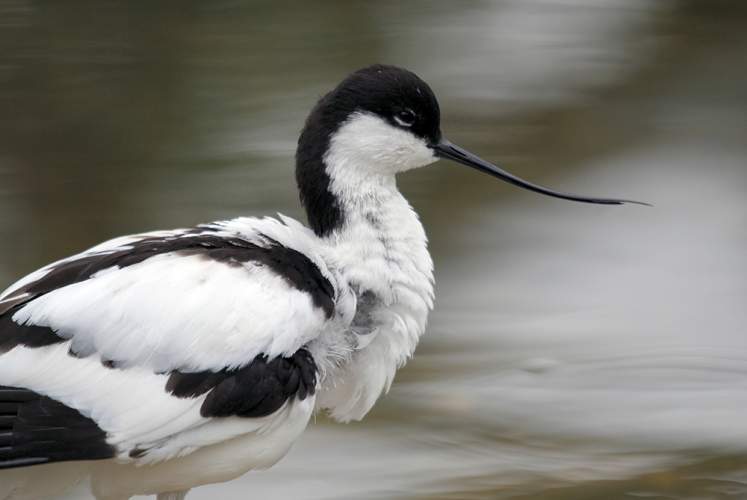
Consequences of population change for local abundance and site occupancy of wintering waterbirds
Wavering Waterbirds
Protected sites are assigned based on population statistics for vulnerable and endangered species. This new study using WeBS data shows that changes in population size can affect local abundance, and thus influence whether or not key targets are met for site protection.
Continuing influences of introduced hedgehogs Erinaceus europaeus as a predator of wader (Charadrii) eggs four decades after their release on the Outer Hebrides, Scotland
Non-native predators can cause major declines or even localised extinctions in prey populations across the globe, especially on islands.
Distribution shifts in wintering Golden Plover Pluvialis apricaria and Lapwing Vanellus vanellus in Britain
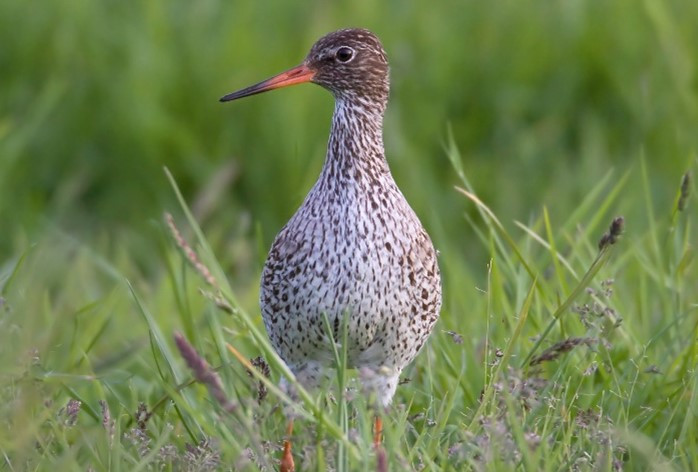
Loss of breeding waders from key lowland grassland sites in Northern Ireland
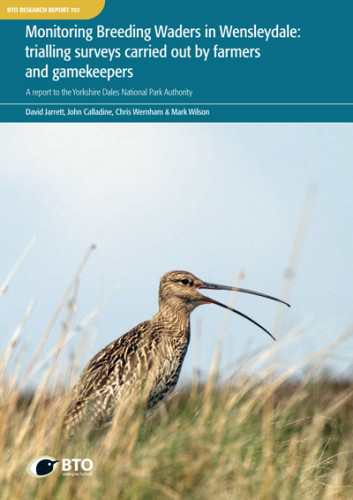
Monitoring Breeding Waders in Wensleydale: trialling surveys carried out by farmers and gamekeepers
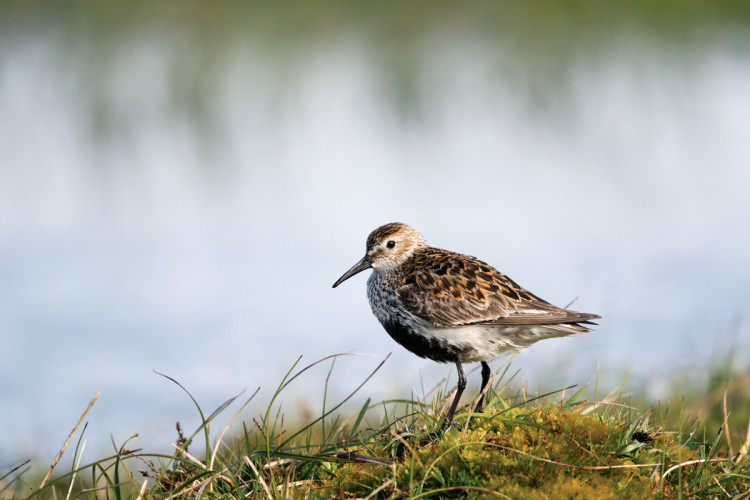
Sensitivity mapping for breeding waders in Britain: towards producing zonal maps to guide wader conservation, forest expansion and other land-use changes. Report with specific data for Northumberland and north-east Cumbria
Sensitivity mapping for breeding waders
Models to be used towards the development of tools to guide, inform and minimise conflict between wader conservation and forest expansion.
Links to more information from ConservationEvidence.com
Would you like to search for another species?
Help us collect data and improve this page for Lapwing
Breeding Waders of Wet Meadows
Help us monitor the long-term population changes of our lowland breeding waders in England and Wales.
Join Breeding Waders of Wet Meadows today














Share this page